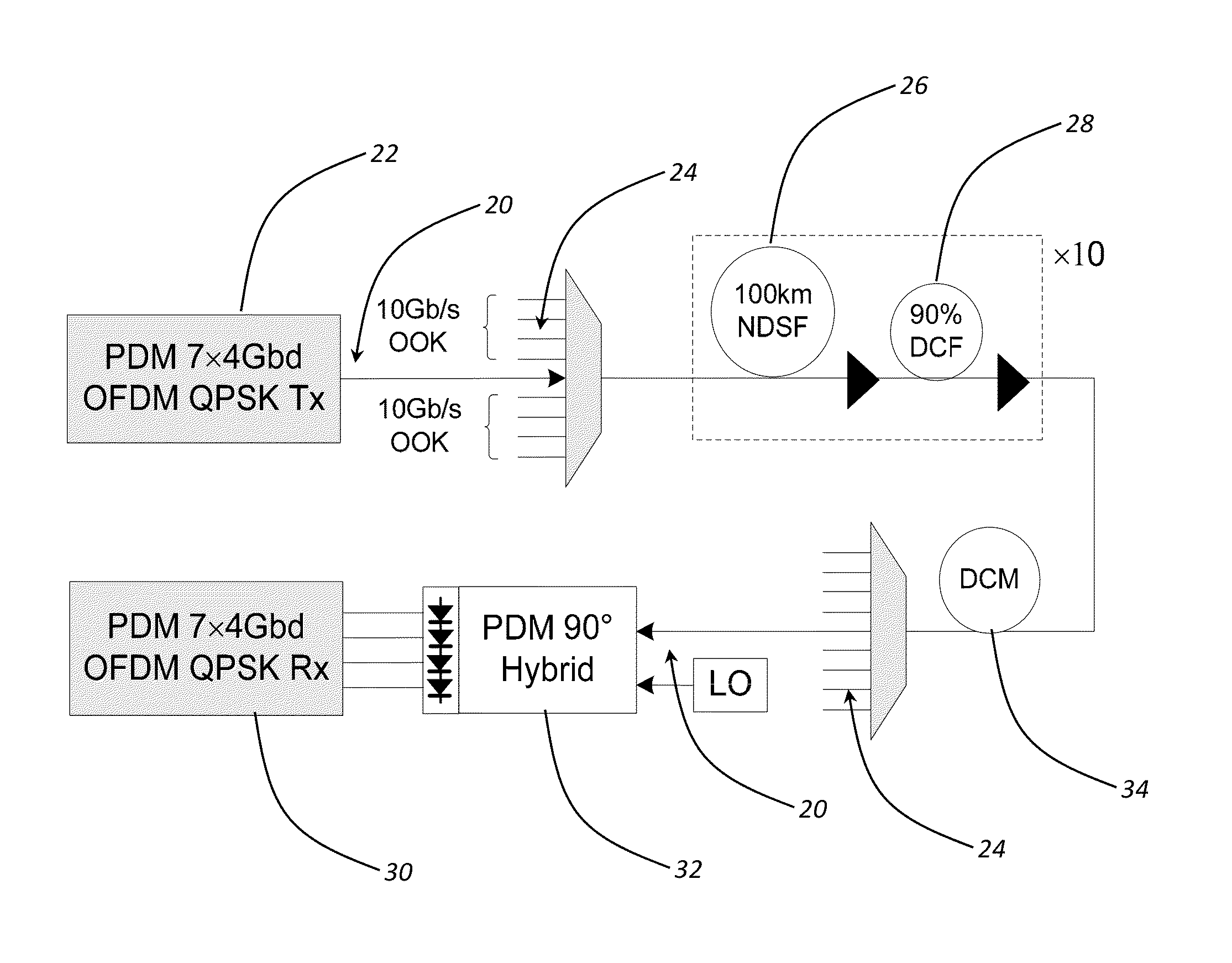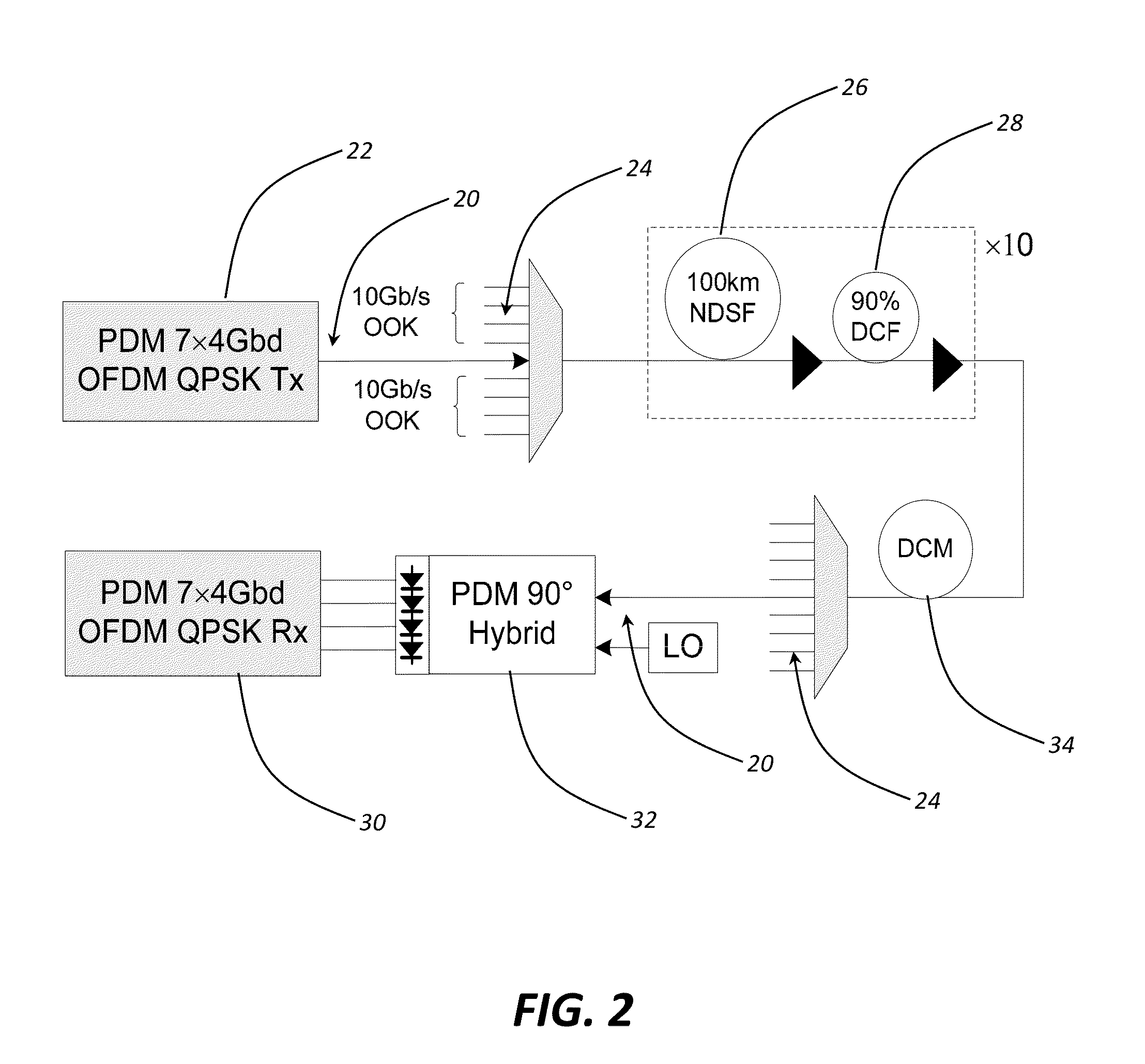Systems and methods for the compensation of nonlinear cross polarization and cross phase modulation in dual polarization coherent channels
a dual-polarization coherent channel and cross-phase modulation technology, applied in the field of system and method for compensating signal distortion in fiber optic communication systems, can solve the problem of significant nonlinear cross talk penalty in a coherent 100 gb/s channel, the speed of polarization and phase tracking in conventional coherent pdm systems, and the reliance on high-speed adc/dsp, etc. problem, to achieve the effect of improving the tolerance to laser phase noise, optimizing
- Summary
- Abstract
- Description
- Claims
- Application Information
AI Technical Summary
Benefits of technology
Problems solved by technology
Method used
Image
Examples
Embodiment Construction
[0022]In one exemplary embodiment, the OPDBP concept of the present disclosure is illustrated in FIG. 1, which shows a spectral diagram of a 112 Gb / s PDM OFDM signal carrying 7×4 Gbaud QPSK SCs in each polarization. Two pilot tones per polarization, launched in phase with the I-component of the signal in the same polarization are placed symmetrically around the center, with the horizontally polarized (H-pol) pilots 10 at νpH1,2=±20 GHz and the vertically polarized (V-pol) pilots 12 at νpV1,2=±16 GHz. Suppose that the PMD, polarization dependent loss (PDL), and ASE are negligible. Then, in a linear propagation regime, a pilot field vector in the H-pol will always remain co-polarized with the H-pol signal field vector, {right arrow over (E)}H, and orthogonal to the V-pol signal field vector, {right arrow over (E)}V. Consequently, at the fiber output, a scalar product of the H-pol pilot, {right arrow over (E)}pH, filtered from the SCs, and the m-th SC(m=1÷7) signal, {right arrow over (...
PUM
 Login to View More
Login to View More Abstract
Description
Claims
Application Information
 Login to View More
Login to View More - R&D
- Intellectual Property
- Life Sciences
- Materials
- Tech Scout
- Unparalleled Data Quality
- Higher Quality Content
- 60% Fewer Hallucinations
Browse by: Latest US Patents, China's latest patents, Technical Efficacy Thesaurus, Application Domain, Technology Topic, Popular Technical Reports.
© 2025 PatSnap. All rights reserved.Legal|Privacy policy|Modern Slavery Act Transparency Statement|Sitemap|About US| Contact US: help@patsnap.com



